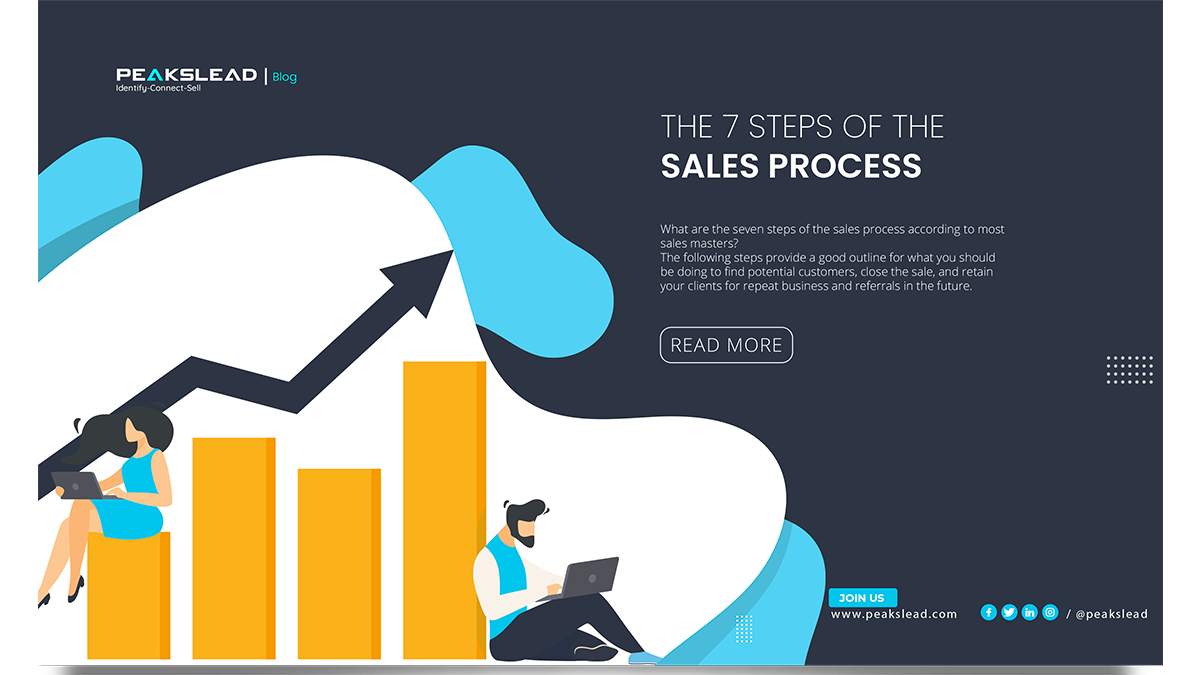
What are the seven steps of the sales process according to most sales masters? The following steps provide a good outline for what you should be doing to find potential customers, close the sale, and retain your clients for repeat business and referrals in the future.
Step 1: Prospecting
The first of the seven steps in the sales process is prospecting. In this stage, you find potential customers and determine whether they have a need for your product or service and whether they can afford what you offer. Evaluating whether the customers need your product or service and can afford it is known as qualifying.
Obviously, this can only be achieved if your lead list contains relevant details about your audience. Luckily for you, PeaksLead’s lead lists are extremely detailed, containing several types of relevant data.
Step 2: Preparation
The second stage has you in preparation for initial contact with a potential customer, researching the market, and collecting all relevant information regarding your product or service. At this point, you develop your sales presentation and tailor it to your potential client’s particular needs.
Step 3: Approach
In the approach stage, you make the first contact with your client. Sometimes this is a face-to-face meeting, sometimes it’s over the phone. There are three common approach methods.
- Premium approach: Presenting your potential client with a gift at the beginning of your interaction
- Question approach: Asking a question to get the prospect interested
- Products approach: Giving the prospect a sample or a free trial to review and evaluate your service
Step 4: Presentation
In the presentation phase, you actively demonstrate how your product or service meets the needs of your potential customer. The word presentation implies using PowerPoint and giving a sales spiel, but it doesn’t always have to be that way—you should actively listen to your customer’s needs and then act and react accordingly.
Step 5: Handling objections
Perhaps the most underrated of the seven steps of a sales process is handling objections. This is where you listen to your prospect’s concerns and address them. It’s also where many unsuccessful salespeople drop out of the process—44% of salespeople abandoning pursuit after one rejection, 22% after two rejections, 14% after three, and 12% after four, even though 80% of sales require at least five follow-ups to convert. Successfully handling objections and alleviating concerns separates good salespeople from bad and great from good.
Step 6: Closing
In the closing stage, you get the decision from the client to move forward. Depending on your business, you might try one of these three closing strategies.
- Alternative choice close: Assuming the sale and offering the prospect a choice, where both options close the sale.
- Extra inducement close: Offering something extra to get the prospect to close, such as a free month of service or a discount.
- Standing room only close: Creating urgency by expressing that time is of the essence.
Step 7: Follow-up
Once you have closed the sale, your job is not done. The follow-up stage keeps you in contact with customers you have closed, not only for potential repeat business but for referrals as well. And since retaining current customers is six to seven times less costly than acquiring new ones, maintaining relationships is key.
Get in the driver’s seat and Connect with potential customers with PeaksLead.






Follow Us On